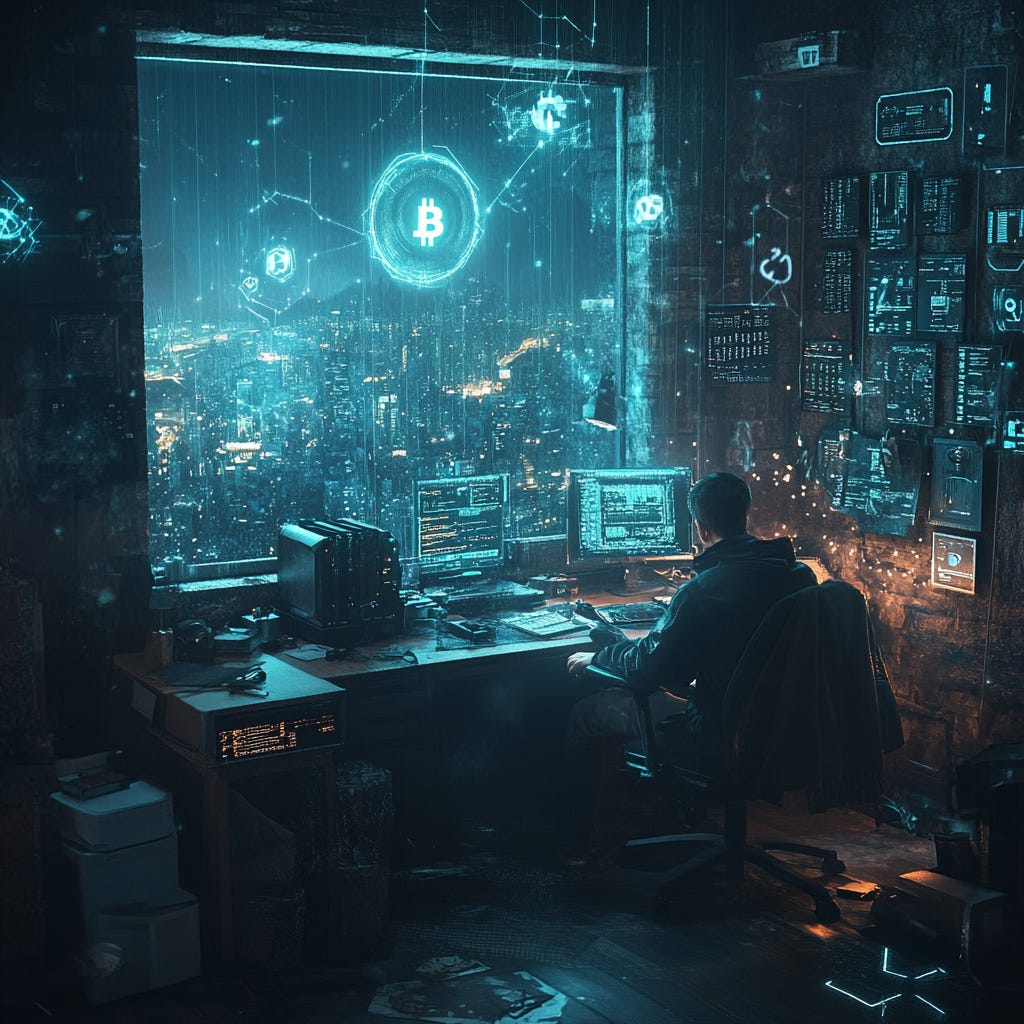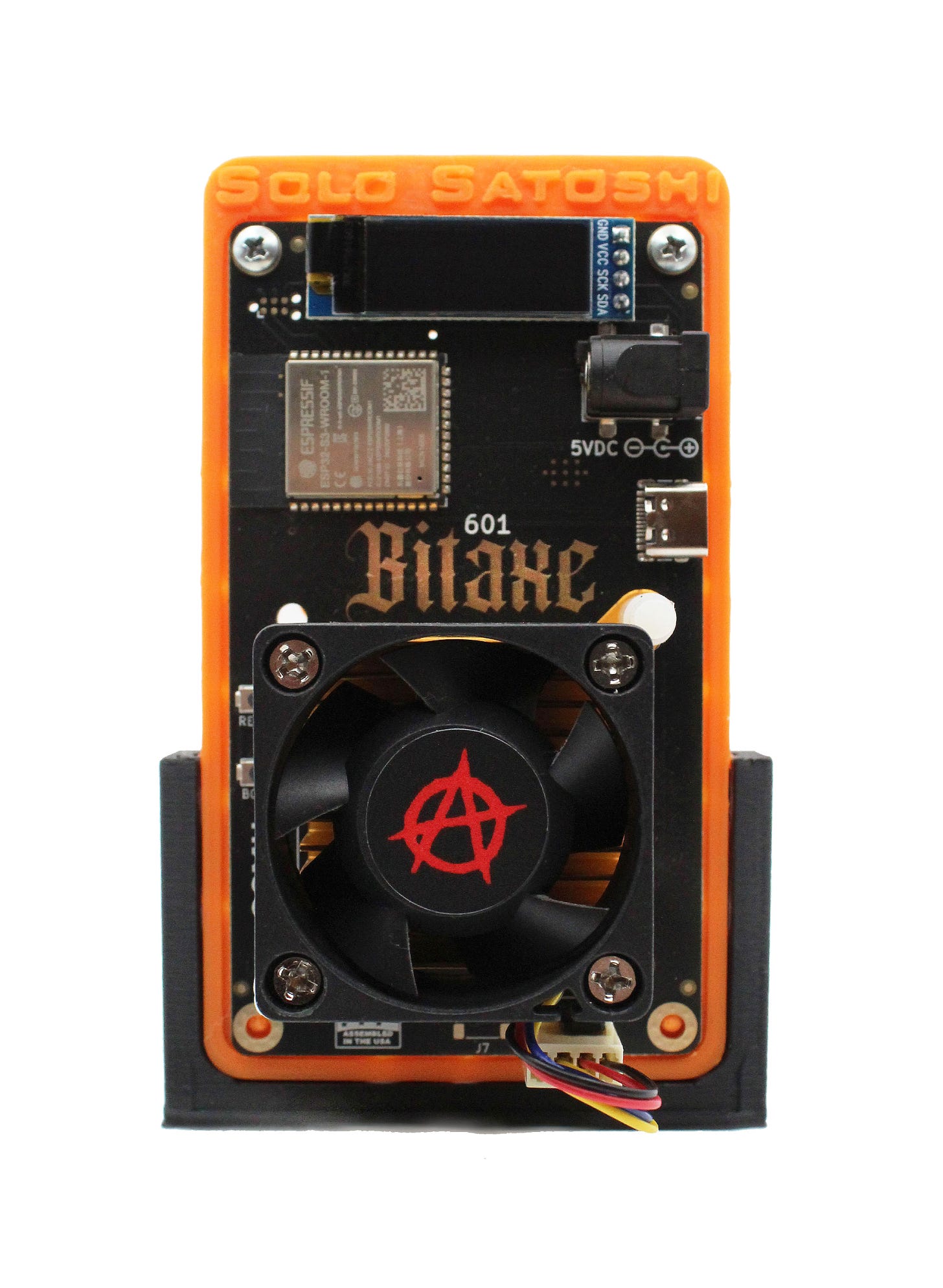Bitcoin mining has long been dominated by industrial-scale operations in regions with abundant and cheap energy. Yet, solo home mining with a Bitaxe miner brings an intriguing alternative, especially for those who value the principles of decentralization. As Bitcoiners, supporting the network goes beyond merely profiting; it's about reinforcing the security and resilience of the protocol. Solo mining is a grassroots approach that not only supports Bitcoin’s ethos but strengthens its very infrastructure by diversifying its mining power.
What Is a Bitaxe Solo Miner?
The Bitaxe is an open-source, compact, and energy-efficient Bitcoin mining device designed for solo home mining. Created with hobbyists and decentralization advocates in mind, the Bitaxe miner offers a simple, cost-effective way for individuals to participate in Bitcoin mining without needing industrial-grade setups.
The Bitaxe operates at 625 GH/s, making it far less powerful than the mining rigs used by large-scale operations. However, its simplicity, affordability, and low energy consumption make it ideal for individuals looking to contribute to the network or experiment with mining. Unlike traditional ASIC miners, which are expensive and complex, the Bitaxe can often be built or assembled by users themselves, thanks to its open-source nature and accessible community resources.
Using the Bitaxe for solo mining is not necessarily about profitability. Instead, it’s about actively participating in the Bitcoin network, learning more about the mining process, and supporting the principle of decentralization. It’s perfect for Bitcoiners who see mining as more than a financial endeavor—it’s a way to engage with and support the Bitcoin ecosystem directly.
Why Decentralizing Mining Matters
Decentralization is foundational to Bitcoin’s security and independence. By allowing anyone with access to mining equipment, like the Bitaxe home miner, to contribute to the network, Bitcoin remains immune to control by any single entity. This model distributes hashing power worldwide, making it difficult for any government or organization to interfere or dominate the mining process.
Industrial miners naturally have a stronghold due to economies of scale, but the entrance of solo miners restores some balance. A wider distribution of miners reduces reliance on centralized entities, ensuring that no one party can unilaterally influence Bitcoin’s protocol or transaction history. The more distributed the mining, the less vulnerable Bitcoin is to geopolitical shifts, regulatory crackdowns, or concentrated network attacks.
Supporting the Network Without Finding a Block
Solo mining with a home miner like Bitaxe allows individual Bitcoiners to participate in this process, even if they may not expect to find a block often. Each hash they calculate still contributes to the network’s overall security. As part of Bitcoin’s “proof-of-work” model, solo miners help validate transactions and reinforce the immutability of the blockchain.
Supporting the Bitcoin network goes beyond profitability. While solo home miners may only earn sporadically, if at all, they become active participants in maintaining Bitcoin’s independence and security. By mining on a small scale, they help maintain decentralization, which strengthens the network against potential attacks. For many Bitcoiners, this participation is a reward in itself, representing a commitment to a decentralized future.
Calculating the Odds of Finding a Block
To put the solo mining experience into perspective, let’s explore the odds of finding a Bitcoin block with a single 625 GH/s Bitaxe miner. SoloSatoshi has highlighted this intriguing calculation, which shows that, remarkably, the odds of successfully mining a Bitcoin block with one Bitaxe miner are considerably better than winning the lottery.
As of recent network difficulty levels, a 625 GH/s Bitaxe miner would have around a 1 in 3,000,000 chance of finding a block per day. While this might seem incredibly slim, it’s significantly better than winning a major lottery, where odds often range around 1 in 300,000,000. The comparison reveals a surprising fact: while solo mining may not yield frequent rewards, it’s a statistically viable way to potentially earn Bitcoin and contribute to the network’s resilience.
Conclusion
Solo home mining with a Bitaxe miner embodies the principles that Bitcoiners hold dear: decentralization, self-sovereignty, and resilience. Even if a solo miner doesn’t find a block, their contribution to Bitcoin’s network remains invaluable. By distributing mining power, we collectively protect Bitcoin’s future against potential centralization. And while the rewards may not come every day, the act of solo mining brings with it a commitment to the protocol that can be as satisfying as any monetary gain.
For those willing to join the journey, solo mining offers an empowering way to actively participate in Bitcoin’s ecosystem, reinforcing its foundation and securing the path to a truly decentralized future. So stay humble, stack sats, and keep hashing – every miner matters in the grand design of Bitcoin’s decentralization.
For more info check out the Bitaxe site here.
Not financial or legal advice, for entertainment only, do your own homework. I hope you find this post useful as you chart your personal financial course and Build a Bitcoin Fortress in 2024.
Thanks for following my work. Always remember: freedom, health and positivity!
Please also check out my Bitcoin Fortress Podcast on all your favorite streaming platforms. I do a weekly Top Bitcoin News update every week on Sunday, focused on current items of interest to the Bitcoin community. Please check it out if you haven’t already. Also now on Fountain, where you can earn Bitcoin just for listening to your favorite podcasts.
Follow me on Nostr:
npub122fpu8lwu2eu2zfmrymcfed9tfgeray5quj78jm6zavj78phnqdsu3v4h5
If you’re looking for more great Bitcoin signal, check out friend of the show Pleb Underground here.
Lightning tips appreciated here.






